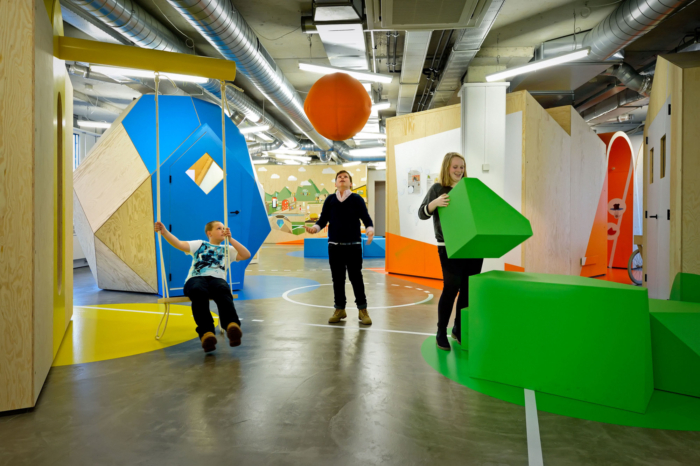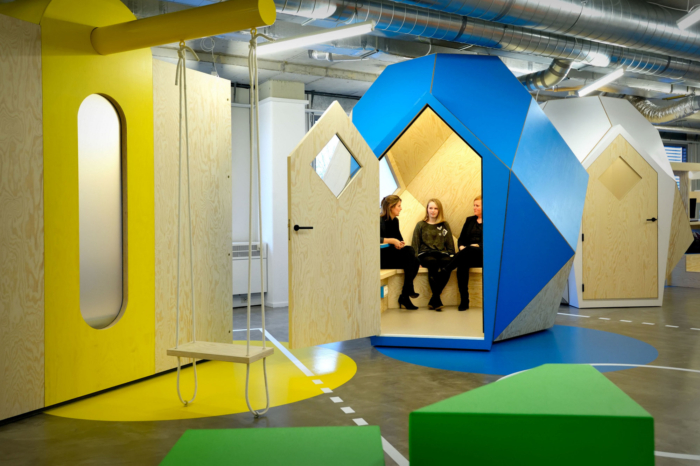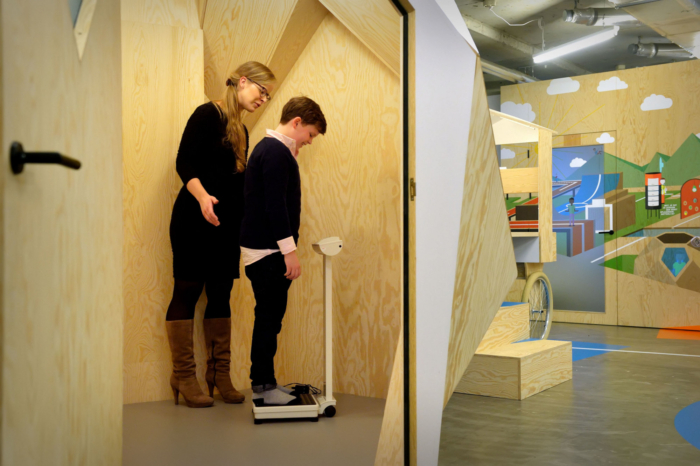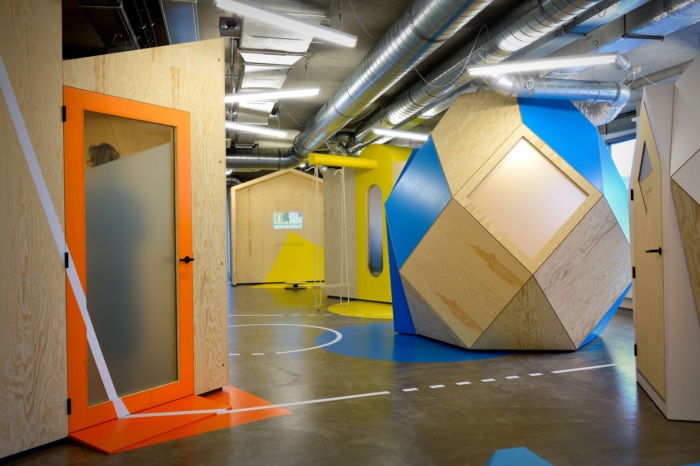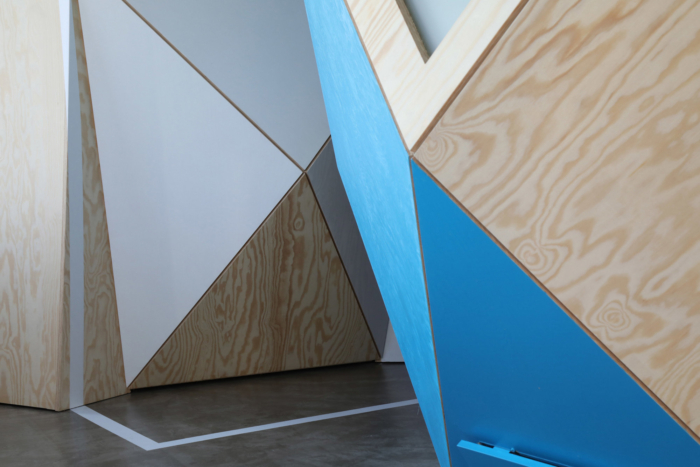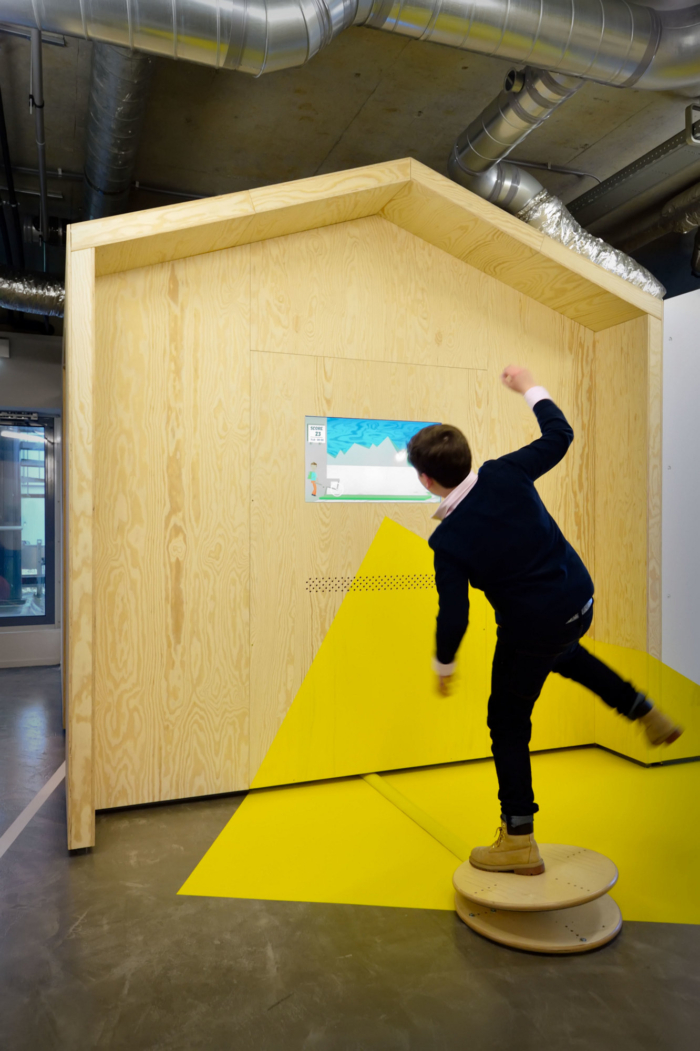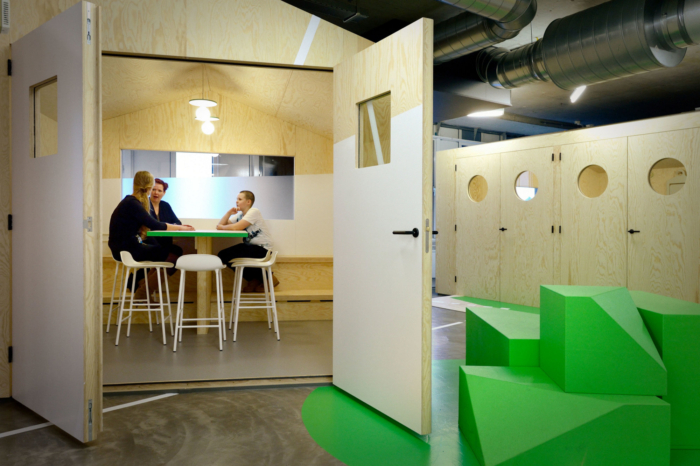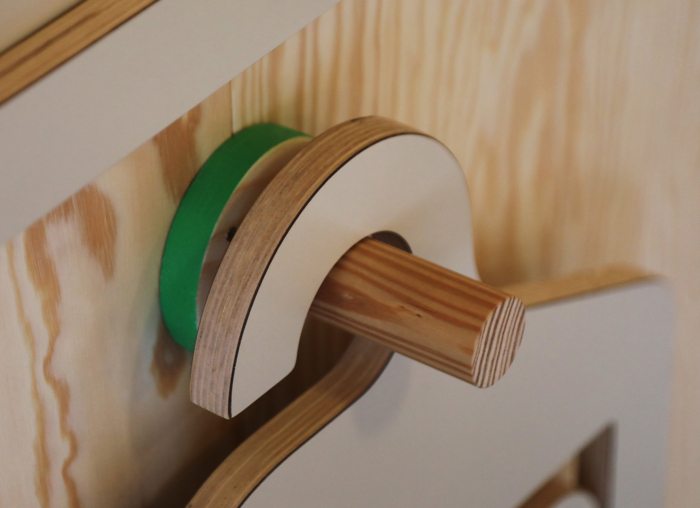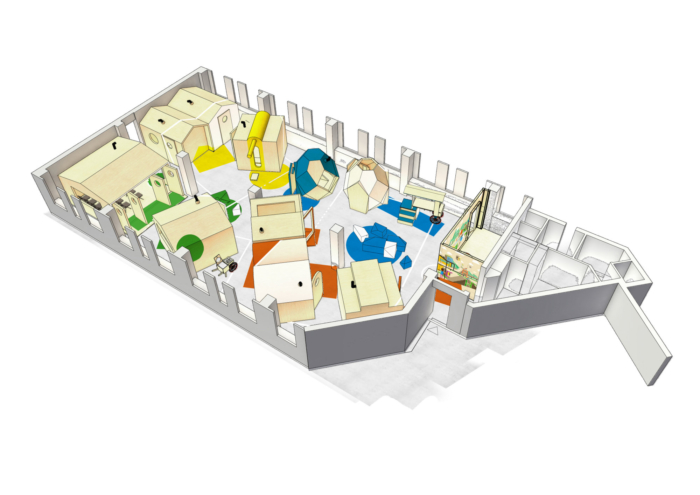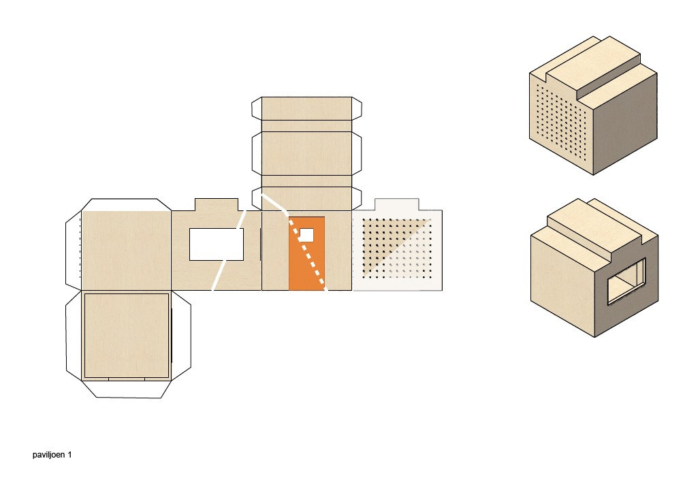COACH – Centre for Overweight Adolescent and Children’s Healthcare of the Maastricht UMC+
Tinker imagineers designed the interactive and playful Centre for Overweight Adolescent and Children’s Healthcare of the Maastricht UMC+ located in Maastricht, Netherlands,
The experience architects of Utrecht-based Tinker imagineers understand the desire for play. The urge for activity should be supported with stimulating interactive architecture. For the temporary location of COACH—the Centre for Overweight Adolescent and Children’s Healthcare of the Maastricht UMC+, where medical staff coach kids to live a healthier and more active life—Tinker imagineers made a stimulating environment that seems miles away from the world of doctors and hospitals, but does not look too “sporty” or competitive either.
At COACH, play is half the treatment. Consultations and weigh-ins take place in colourful, soundproof pavilions scattered around two central squares, while intersecting lines and surfaces are reminiscent of a mash-up of various playing fields. In the open waiting area, where nobody actually waits, “treatment” starts before the appointment does. The number one stimulus is the fact that you can’t sit down and wait for your turn because the waiting area has been changed into a playground. There is an array of interactive games that require stretching, climbing, swinging, riding, moving, and working together. They can, for instance, try to keep their balance while collecting the healthy products falling down on a display. Or stretch and work together to make the right connections to switch the lights on.
An interactive wall introduces the participants to the world of COACH. Children are asked questions like: “Did you know that breakfast is the best way to start the day?” or “Did you know that your body is like a rechargeable battery?” A sensor in the wooden wall responds to their touch, and an animation projected on that wall provides the answer. The information is truly brought to life here—in a light, non-patronising way. Some of the touch points are deliberately placed higher on the wall, to encourage children to involve their parents in the game.
Every pavilion is varied in shape, colour, and form and has different seating and standing furniture. The pavilions have been constructed with an eye for detail: unexpected touches of colour and remarkable constructions. In order to stress the pop-up character, the structures were made of unfinished wood and the pipes in the ceiling are still visible. The synergy with the builders pushed the project to a higher level of execution. The light plan was adapted as well and refers to the mixed-up lines of a playing field, too.
Architect: Tinker imagineers
Photographer: Mike Bink


